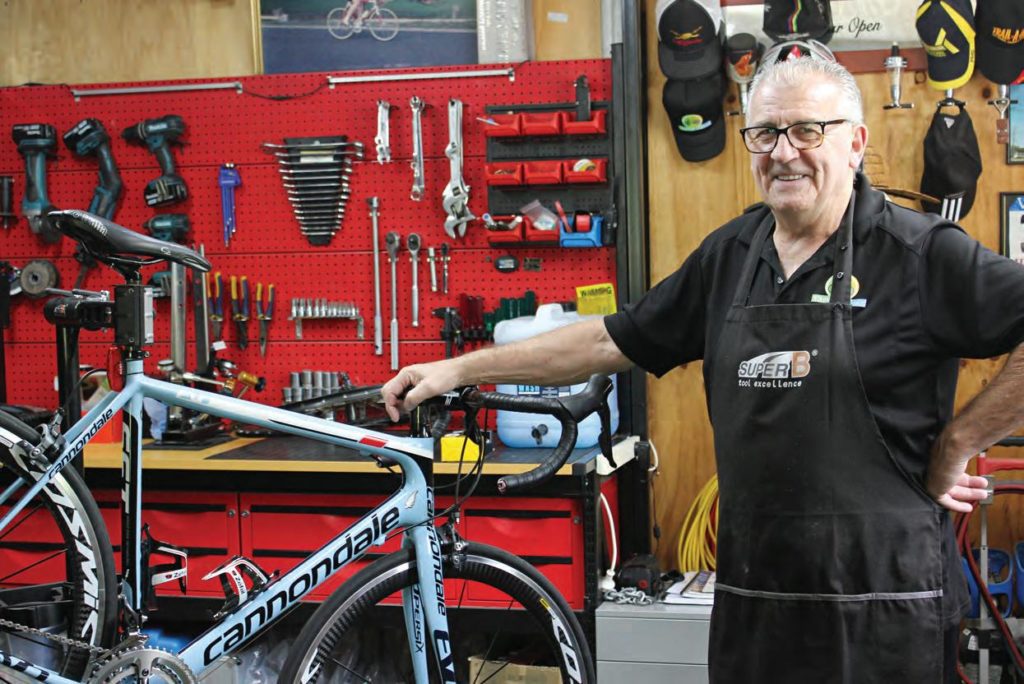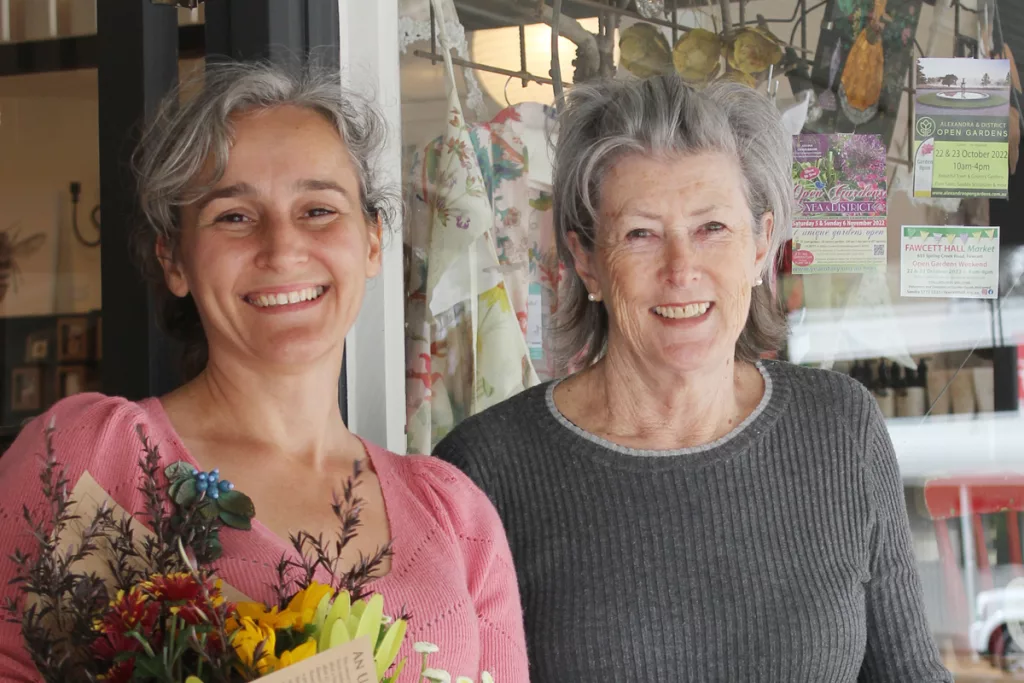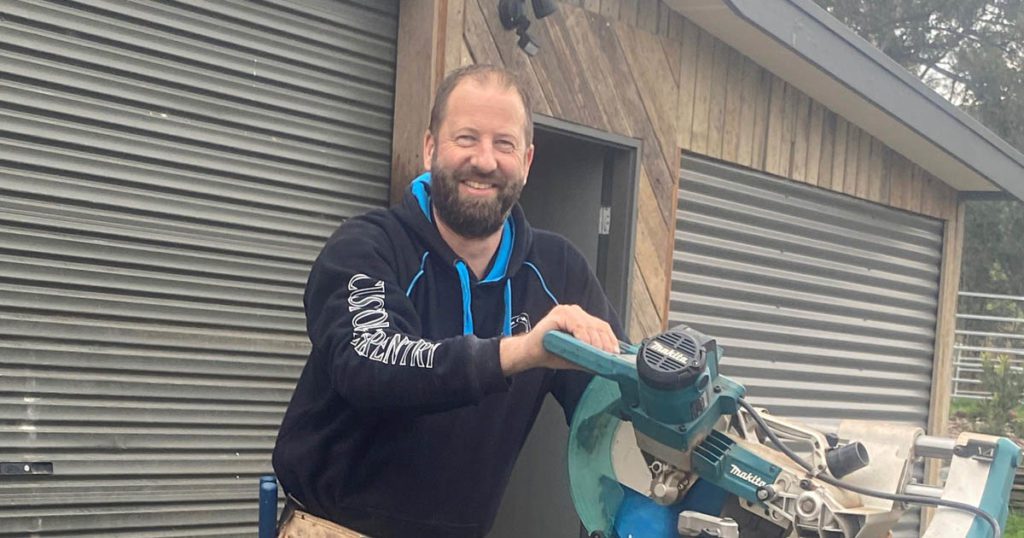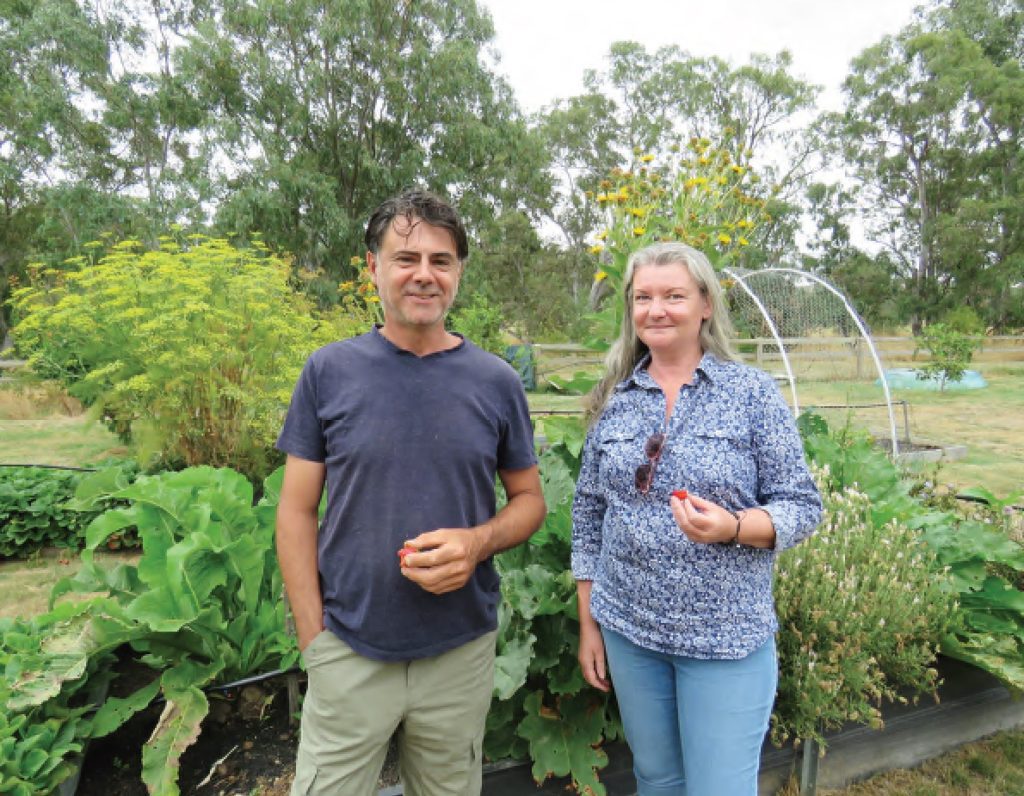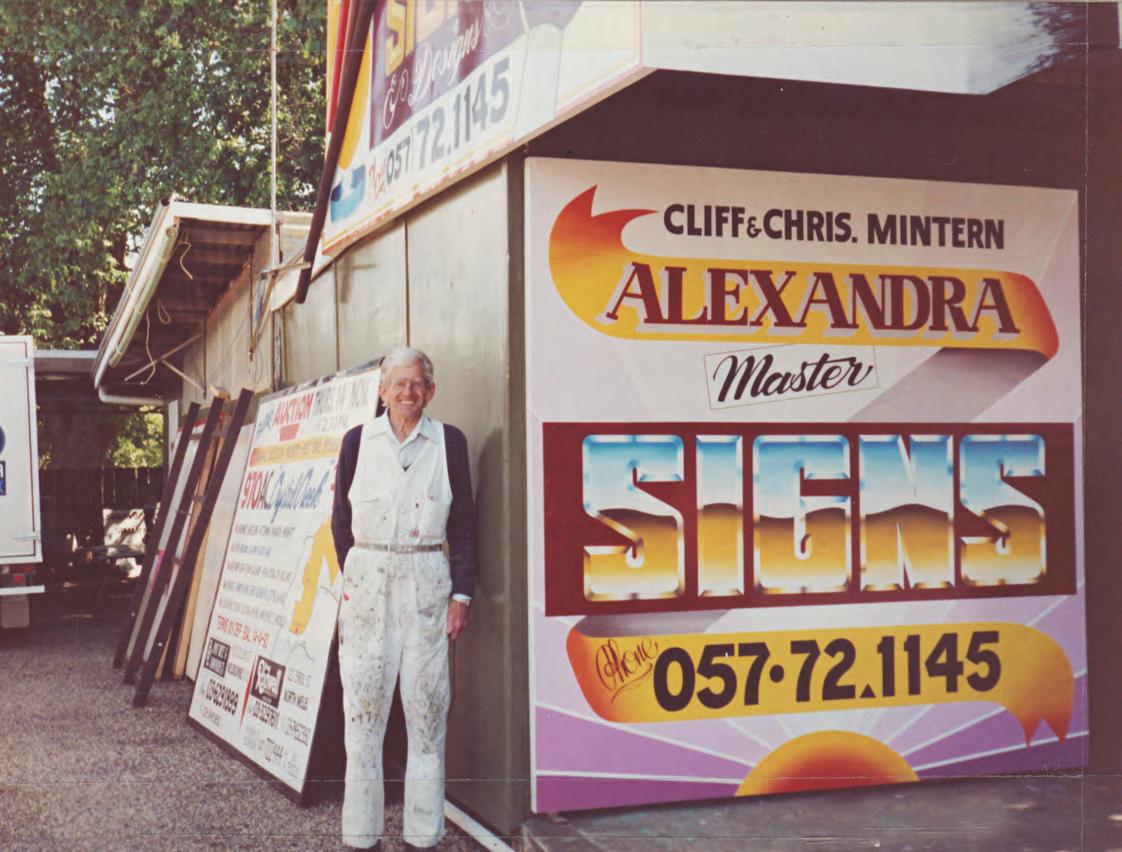
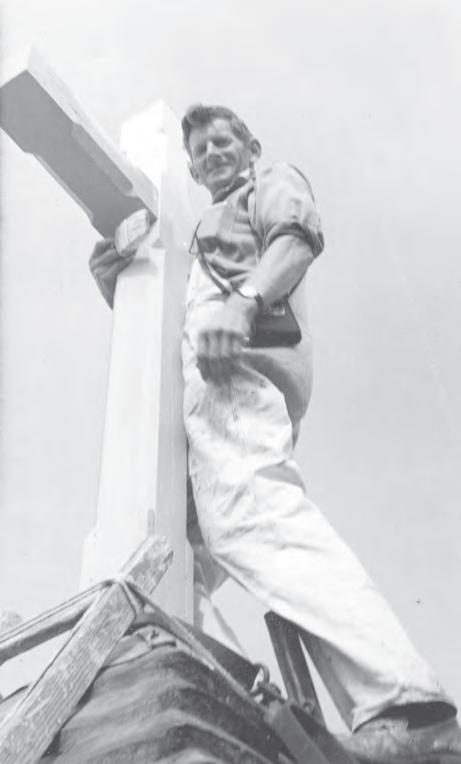

Cliff Mintern’s signwriting stick takes pride of place on a windowsill at Alexandra Signs. The stick is about half a metre long with a ball on one end that would be placed up against the sign while its owner steadied his forearm on its length to keep his brushstrokes precisely controlled. Years of hard work are evidenced on the stick’s surface, which is coated in a thick layer of different coloured paint spots.
Cliff’s daughter, Julie Evans, has carried on his signwriting business, and she speaks fondly of her dad as she demonstrates how the signwriting stick was used. Once considered a necessary tool of the trade, it is not something Julie has much need for in the digital age of signwriting, but it brings back many happy memories.
“As a little kid, I can remember Dad signwriting by hand with the stick. Dad used to go around and do windows by hand, sale signs and that sort of thing, but now you can just get the vinyl, so it’s much quicker,” Julie says.
Alexandra Signs started in the late 1950s when Cliff was working as a house painter and discovered a demand for signwriting. “He was painting and people wanted signs and he thought he could do that. I think a guy he knew was a sign writer and must have shown him a few things and he went from there. He had lots of books, lots of calligraphy books, and he just figured it out. He loved it,” Julie says.
Cliff apparently had a knack for signwriting and was able to work freehand – a skill Julie still marvels at.
“He had a wall at the old shed, so he’d put a banner up, and then he’d get chalk and just roughly scribble out what he was going to do, and he’d just sit and do it,” she says.
While Julie was able to learn the trade, she says for handwritten signs, she still relies on stencilling her designs first and then filling them in. She puts her dad’s abilities down to his artistic streak.
“He could paint and draw. He scribbled when he wrote, he didn’t really write beautifully, but he could paint. I think you’ve got to have a flow in you. He was different from someone like me who has to really use science to think about it. He used to paint for a hobby, go out and paint the Cathedral, and he could draw cartoon characters – I remember him doing pictures of Goofy,” Julie says.
In the late 80s, Cliff decided it was time to retire and sold the business. This only lasted a few years before he felt compelled to go back to signwriting at the ripe old age of 70. Then, in 1991, Julie came on board and took over the jobs that Cliff wasn’t too keen on, including anything computer-related and the bookwork.
Thirty years after she started working with her dad, Julie is now running a modernised version of the business, with most of her work being digitally-based. But she still does the odd bit of handwritten work.

“There’s not much call for it anymore. It’s mostly for people who want little house signs or little cottage garden signs. I’ve got two lettering brushes that I hardly ever use but I keep them pretty much perfect – you’ve got to really look after them. Dad had his favourite brushes; he didn’t like new ones because he liked the ones that he’d worn in,” she says.
Julie’s workspace is now in the backyard of her 16-acre property just outside of Alexandra, which is fitting given her dad also spent a lot of time working at home.
“I can just remember him in the yard, he was always out signwriting. I’d go into his shed and he had lots of gold leaf and little boxes of interesting stuff. His workshop was like a little treasure trove,” she says.
On the shelves in Julie’s own workshop there are photos of Cliff and some of his elaborately painted work vehicles. One car Cliff was especially well-known for was a distinctive blue Cortina emblazoned with the business name and blue-and-orange decorative stripes.
Julie’s workshop is also home to a large wooden bench that Cliff built. The benchtop is adjustable so that it can be raised or lowered to make the signwriter’s job easier – a feature Julie still takes advantage of when making signs, adding her own wear marks to those accumulated by her father’s use of the bench.
In the latest Alexandra Signs workshop, it is clear that much has changed since Cliff started the business, and his signwriting stick propped up on the windowsill now symbolises a bygone era in the trade. But Julie is proud to carry on the work he started, providing signwriting services across the Murrindindi Shire.
“It’s really his story, I’ve just taken it over and keep mucking around with it,” she says.
For more information on Alexandra Signs, call 0419 880 152 or email alexandrasigns@bigpond.com
